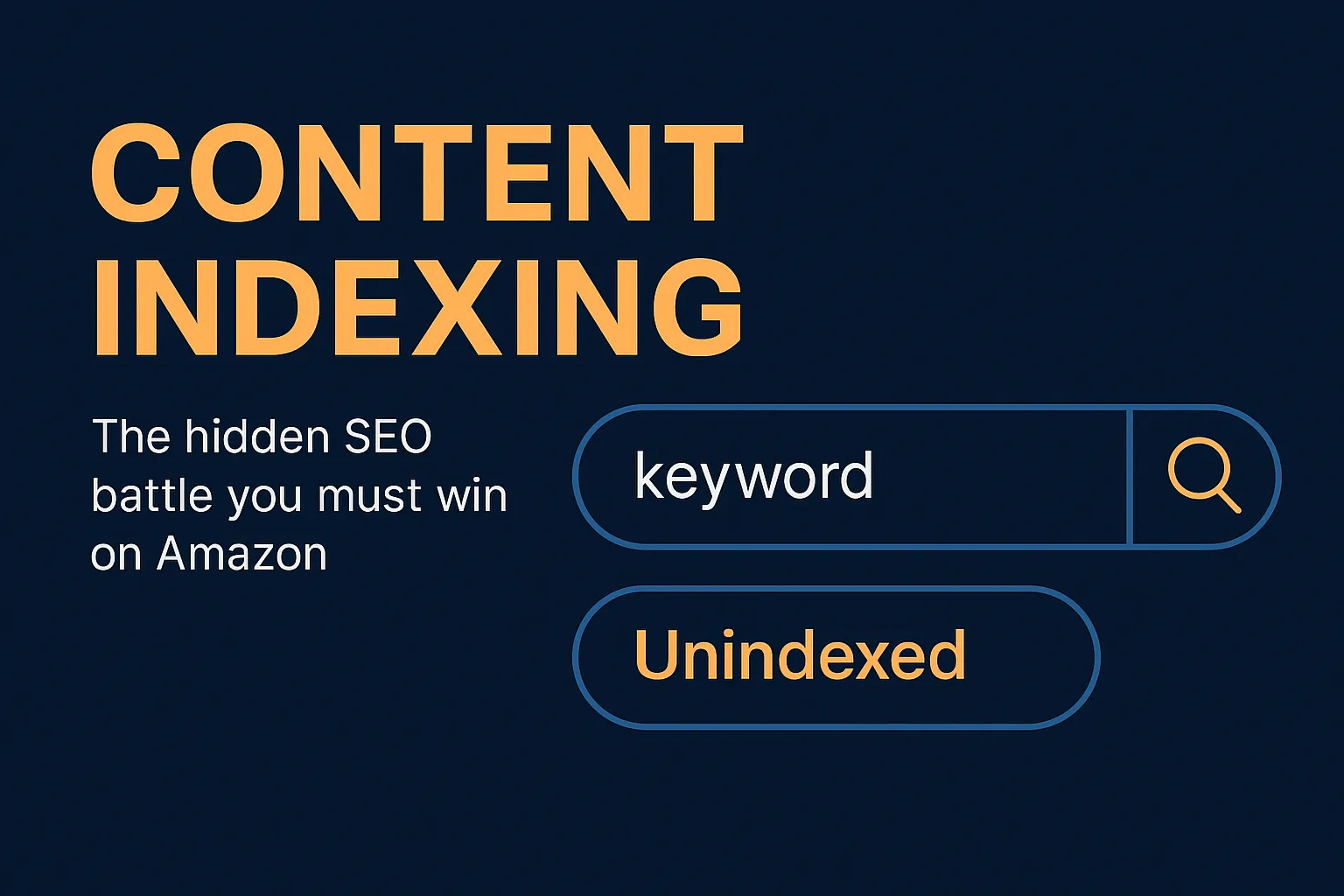- Perfality
- October 15, 2025
- 11:00 am
- Read Time: 5 mintues
When sellers talk about ranking on Amazon, the conversation usually jumps straight to PPC bids, keyword tools, and reviews. But here’s the truth: none of that matters if your content isn’t even indexed. If Amazon doesn’t recognize the terms in your listing, you’re invisible no matter how much you spend on ads or how strong your brand might be. That’s why Content Indexing is the hidden SEO battle every seller has to win before anything else.
At Perfality, we’ve seen brands with great products and strong marketing waste months wondering why their pages weren’t showing up. The issue wasn’t the product—it was poor indexing. Fix that, and suddenly their Amazon SEO efforts started paying off.
What is content indexing on Amazon?
Content indexing is Amazon’s way of deciding which keywords your product is eligible to show up for. If the system can’t connect your listing with a shopper’s search term, you don’t exist in the results.
It sounds basic, but indexing is the foundation of Amazon SEO. You can have beautiful images, A+ content, and even strong ad campaigns, but without indexing, it’s like building a store where the doors are locked.
Why indexing often fails
Most indexing problems aren’t about Amazon being unfair. They come down to how listings are built. Some of the common mistakes we see include:
- Stuffing too many terms in the wrong places (Amazon often ignores them).
- Forgetting backend search fields.
- Not including Trade Keywords—the industry terms customers actually use, even if they’re not “official.”
- Repeating words so often that they trigger filters instead of boosting rank.
When sellers fix these basics, indexing almost always improves—and so does visibility.
The role of trade keywords
One of the biggest gaps in most listings is the use of Trade Keywords. These are the words customers type because they don’t speak the “catalog language.” For example, a shopper might search “couch” while the listing only says “sofa.” If you’re not indexed for both, you’re losing traffic.
Good indexing means thinking like your buyer, not just your brand. That means including trade terms, synonyms, and regional variations in the right fields—without making the listing read like a spammy keyword dump.
How to check if you’re indexed
The simplest test? Go to Amazon’s search bar, type “ASIN + keyword,” and see if your product appears. If it doesn’t, you’re not indexed for that term. Do this for all your top keywords and you’ll quickly see the gaps.
At Perfality, we often run these audits as a first step. It’s surprising how many times we uncover that a brand’s best keywords simply aren’t firing because they were never indexed properly.
Building for both indexing and conversion
Winning at indexing doesn’t mean jamming every possible keyword into your title. The real art is balancing Content Indexing with readability and conversion. Amazon wants listings that both match searches and make sense to shoppers.
That’s why our approach combines:
- Keyword placement in titles, bullets, backend, and A+ content.
- Strategic use of Trade Keywords to capture how real buyers search.
- Clean structure so listings remain readable and persuasive.
This way, your content serves both the algorithm and the human buyer.
Final thought
If your Amazon sales feel stuck, the problem might not be competition or ads—it might be indexing. Without solid Content Indexing, your Amazon SEO Strategy never really gets off the ground. And without attention to Trade Keywords, you’ll always miss part of your audience.
Perfality helps brands win this “invisible” battle by auditing listings, plugging keyword gaps, and making sure every piece of content is both indexable and shopper-friendly. Because on Amazon, if you’re not indexed, you’re not even in the game.






